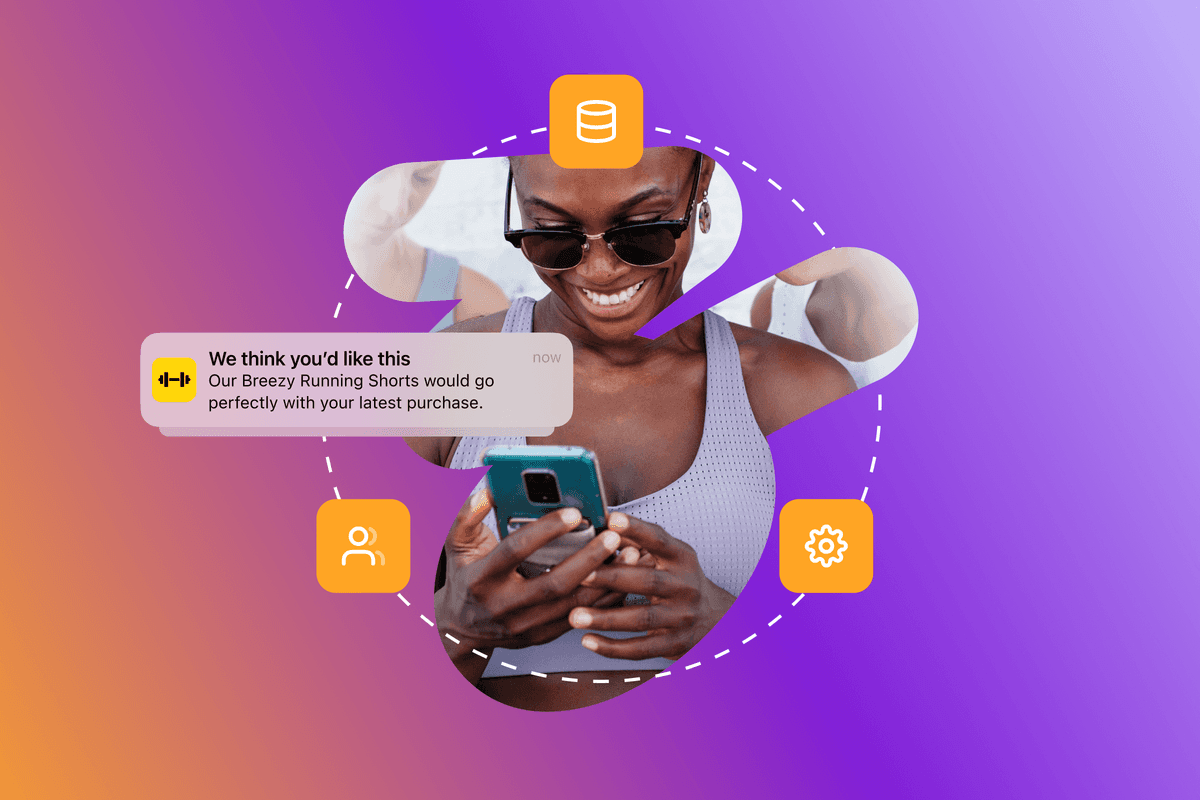Improve Customer Engagement by Tackling Decision Paralysis
Published on August 11, 2016/Last edited on August 11, 2016/4 min read


Team Braze
Decision paralysis has been one of marketing’s biggest challenges since before the internet even existed. The idea is simple: we “don’t know what we want very often,” as behavioral scientist, Duke University professor, TED speaker, and author Dan Ariely explained in an interview with AdAge. Complicating matters even further is the fact that humans are risk-averse and that, to some extent, all decisions are emotional.
How can a mobile marketer simplify their customers’ decision processes? Tailor your app messaging to your customers’ lifecycle journeys. Here’s how.
Use curation strategically
A few months ago, I wrote a series on customer lifecycle targeting in which we shared a framework for reaching the right audiences with the right messages at the right time. If you are new to the topic of lifecycle targeting or are looking for a refresher, check it out.
The takeaway is simple: your app users and target audiences are going to have specific needs or questions at different stages of their buying journeys. With each of these interactions, your marketing messages have the ability to provide extra guidance. You can make ‘big’ decisions easier by giving your users a fixed set of options.
A great company to consider here is Etsy. As fun as the online marketplace is to explore it’s often overwhelming. What if your customer is looking to make a purchase in a pinch, without doing extensive searching and digging?
Etsy tackles this marketing challenge by sending its audiences curation-based newsletters during prime shopping seasons—times of the year when people need to make quick shopping decisions but still want to be thoughtful in their buying decisions.
Check out this newsletter with curated products for July 4th celebrations.

Provide Fewer Options and More Guidance Through a Decision
Let’s say that you’re running a marketing campaign that sends audiences to mobile landing pages. Perhaps you’re asking them to sign up for a product, or review their experience with your product. Instead of barraging your users with requests and questions, make the process easy: give them a few options from which to choose.
Here’s a tangible example, a “review your experience” email from DoorDash, a popular food delivery app. Following every order, the company sends users a short feedback survey. Customers have the option to complete this survey within the app or over email.

Rather than asking an open ended question that could potentially confuse users, DoorDash keeps the process simple. Users can simply pick a number on a scale from one to five. DoorDash can aggregate these numbers, monitor trends over time, and correlate user satisfaction with messaging strategies moving forward. This simplification process brings together the best of two worlds: a powerful quantitative vantage point for trend extrapolation, with minimal input from the customer.
Make It Easy for Users to Get Guidance
“What’s for dinner?”
It’s a question that we all understand as one of the toughest to answer–as you know, questions open doors to more questions. What’s everyone in the mood for? What ingredients are on sale? Eventually, you ask yourself enough questions that you find yourself gridlocked.
(We’ve all been there).
It’s this idea that inspired a new Facebook Messenger chatbot from Whole Foods. Here’s how it works:
- Pick one of Facebook’s food emojis
- Send the emoji to the chatbot
- Get a short list of awesome recipes to try

The effort is low-touch on the part of the app user. Whole Foods’s artificial intelligence (AI) bot takes care of all of the thinking, planning and decision-making. All that you need to do is express what’s on your mind. It’s up to the AI to come back with ideas.
The app, itself, is a big marketing experiment in tackling decision paralysis. Think about it. When is decision paralysis strongest? It’s in a place where you’re likely to experience option overload–the grocery store.
Through a messaging-based strategy, the app gives consumers a structured way to explore new options for food and simplify their grocery store experiences as a result.
Final thoughts
In the early days of marketing, companies had limited options for tackling decision paralysis. The obvious strategic choice was to simplify the number of available options. But today, consumers demand personalization. And app messages are a simple way to deliver personalized, guided experiences in an automated way, at scale.
Be Absolutely Engaging.™
Sign up for regular updates from Braze.
Related Content
View the Blog
Data-Driven Personalization Heralds a New Era of eCommerce with Braze and Shopify

Ankit Shah

What is marketing orchestration?

Team Braze

Customer acquisition strategies: What they are, why they matter, and how to master them
